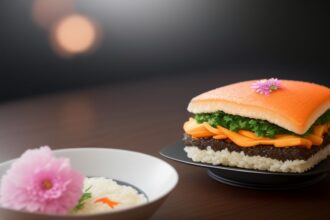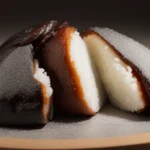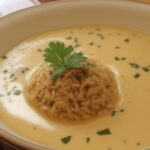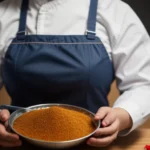
Turkish cuisine is known for its bold flavors, rich history, and diverse ingredients. From kebabs to baklava, Turkish food offers a unique and delicious culinary experience. While it may seem daunting to try your hand at cooking Turkish dishes at home, with a few key ingredients and techniques, you can bring the flavors of Turkey to your kitchen with ease. In this article, we will explore some classic Turkish dishes and recipes that are simple to make and sure to impress your family and friends.
I. Introduction to Turkish Cuisine
Turkish cuisine is a fusion of Mediterranean, Middle Eastern, Central Asian, and Balkan influences. It is characterized by the use of fresh, seasonal ingredients, aromatic spices, and flavorful herbs. Some staple ingredients in Turkish cooking include olive oil, yogurt, bulgur, and lamb. Turkish cuisine is also known for its use of spices such as cumin, paprika, and sumac, which add depth and complexity to dishes.
II. Key Ingredients in Turkish Cuisine
– Olive oil: Used in many Turkish dishes for its rich flavor and health benefits.
– Yogurt: A staple in Turkish cuisine, used in both savory and sweet dishes.
– Lamb: A popular protein in Turkish cooking, used in dishes like kebabs and stews.
– Bulgur: A type of cracked wheat that is used in pilafs, salads, and soups.
– Herbs and spices: Including cumin, paprika, mint, and sumac, which add flavor and depth to dishes.
III. Turkish Breakfast: Menemen
Menemen is a traditional Turkish breakfast dish made with tomatoes, peppers, and eggs. It is a simple yet flavorful dish that is perfect for a leisurely weekend brunch. To make menemen, sauté chopped tomatoes and peppers in olive oil until soft, then crack in eggs and cook until set. Serve with crusty bread for a delicious and satisfying meal.
IV. Appetizer: Hummus
Hummus is a popular Middle Eastern dish that has become a staple in Turkish cuisine. Made from chickpeas, tahini, lemon juice, and garlic, hummus is a healthy and delicious dip that is perfect for serving with pita bread or vegetables. To make hummus, simply blend all the ingredients together in a food processor until smooth, then drizzle with olive oil and sprinkle with paprika before serving.
V. Main Course: Turkish Kebabs
Turkish kebabs are a classic dish that is perfect for a summer barbecue or a cozy night in. There are many different types of kebabs in Turkish cuisine, including shish kebabs, adana kebabs, and doner kebabs. To make Turkish kebabs at home, marinate your choice of protein (such as lamb, chicken, or beef) in a mixture of olive oil, yogurt, and spices, then grill until cooked to your liking.
VI. Side Dish: Kisir
Kisir is a bulgur salad that is bursting with fresh flavors and textures. Made with bulgur, tomatoes, cucumbers, parsley, and mint, kisir is a refreshing side dish that pairs well with grilled meats or kebabs. To make kisir, simply mix all the ingredients together in a bowl, then dress with olive oil, lemon juice, and pomegranate molasses for a tangy and flavorful salad.
VII. Soup: Lentil Soup
Lentil soup is a comforting and nutritious dish that is popular in Turkish cuisine. Made with red lentils, onions, carrots, and spices, lentil soup is hearty and satisfying, perfect for a cold winter day. To make lentil soup, simply sauté the onions and carrots in olive oil, then add the lentils and spices and simmer until the lentils are tender. Serve with a squeeze of lemon for added freshness.
VIII. Dessert: Baklava
Baklava is a classic Turkish dessert made with layers of phyllo dough, nuts, and honey. It is a sweet and indulgent treat that is perfect for special occasions or holidays. To make baklava, layer sheets of phyllo dough with a mixture of ground nuts and spices, then bake until golden and crisp. Drizzle with a syrup made from honey, sugar, and water, then let the baklava cool before serving.
IX. Vegetarian Option: Stuffed Eggplant (Karniyarik)
Karniyarik is a traditional Turkish dish made with eggplants that are stuffed with a spiced mixture of onions, tomatoes, and peppers. It is a hearty and flavorful dish that is perfect for vegetarians or anyone looking to add more vegetables to their diet. To make karniyarik, cut slits in the eggplants and stuff with the mixture, then bake until the eggplants are soft and the filling is bubbly.
X. Street Food: Turkish Pide
Turkish pide is a popular street food that is similar to pizza, but with a uniquely Turkish twist. It is made with a soft, fluffy dough topped with a variety of toppings such as cheese, vegetables, and meats. To make Turkish pide at home, roll out the dough into a long oval shape, then add your toppings and bake until the crust is golden and bubbly.
XI. Snack: Borek
Borek is a savory pastry that is popular in Turkish cuisine. It is made with layers of phyllo dough filled with a mixture of cheese, spinach, or ground meat. Borek is a versatile dish that can be served as a snack, appetizer, or side dish. To make borek, simply layer the phyllo dough with the filling, then bake until golden and crispy.
XII. Spice Mix: Baharat
Baharat is a flavorful spice blend that is used in many Turkish dishes. It typically includes a combination of cumin, paprika, cinnamon, and cloves, among other spices. Baharat adds depth and complexity to dishes and can be used as a rub for meats, a seasoning for soups, or a sprinkle for grilled vegetables. To make baharat at home, simply mix the spices together in a bowl and store in an airtight container for future use.
XIII. Beverage: Turkish Tea
Turkish tea is a staple in Turkish culture and is enjoyed throughout the day. It is a strong black tea that is served in small tulip-shaped glasses with sugar cubes on the side. Turkish tea is typically brewed in a double-stacked teapot called a “caydanlik” and is traditionally served with a small glass of water to cleanse the palate. To make Turkish tea at home, simply steep black tea leaves in boiling water and serve hot with sugar.
XIV. Conclusion
Bringing the flavors of Turkish cuisine into your home is a delicious and rewarding experience. With a few key ingredients and some simple techniques, you can create a wide variety of Turkish dishes that are sure to impress. From savory kebabs to sweet baklava, Turkish cuisine offers a culinary journey that is rich in flavors and history. So roll up your sleeves, gather your ingredients, and get ready to enjoy the tastes of Turkey in your own kitchen.
XV. Resources
– “The Turkish Cookbook” by Musa Dağdeviren
– “Turkish Flavors: Recipes from a Seaside Café” by Sevtap Yüce
– “Classic Turkish Cooking” by Ghillie Basan
– www.seriouseats.com: Turkish Cuisine 101: A Beginner’s Guide to Turkish Food
















